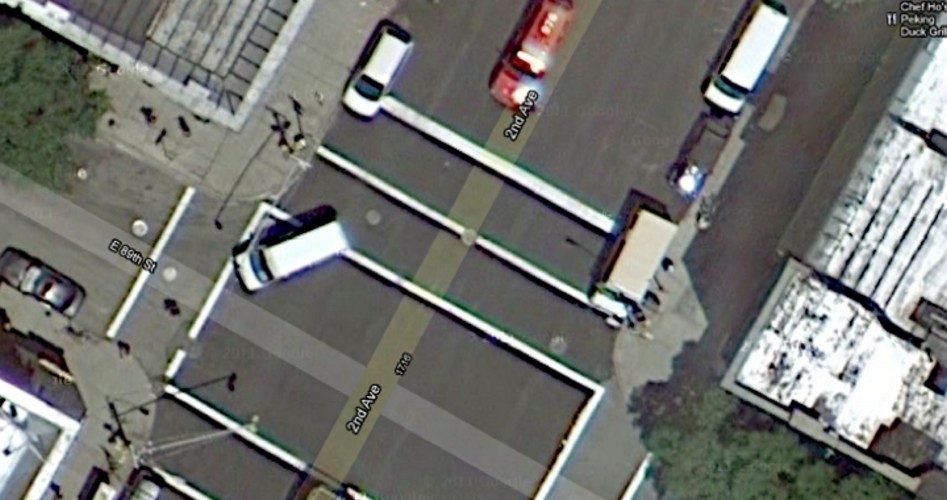
Adding to its revolutionary navigation service, Google is planning to release a new version of the Google Maps program, offering users a 3D aerial-mapping technology that provides details capable of showing objects just four inches wide. But as U.S. technology companies race to produce aerial maps with greater detail and visibility, critics are posing privacy concerns and warning that America is quickly becoming a surveillance society.
During an event last Wednesday, the search-engine giant unveiled “the next dimension of Google Maps,” demonstrating its new 3D mapping technology, called MapsGL, and showing the audience how to use the maps program offline. Further, Luc Vincent, Google’s Engineering Director of “Street View,” featured a new backpack mapping device that allows Google to map new areas that bikes, cars, and other vehicles cannot reach. In describing the nature of the event, PC Magazine explained how Google’s navigation service is evolving:
At the event, Peter Birch, project manager of Google Earth, went through the evolution of dimension on Google Maps, from flattened to photorealistic. While Google Maps images had been cobbled together from multiple sources, MapsGL is powered by automated technology to extract 3D from aerial images that Google obtained from a fleet of planes it contracts with that fly exclusively for Google. This, combined with the release of MapsGL for Android and iOS in the next few weeks and the already over one billion users of Google Maps, considerably raises the bar for any maps announcement that might be forthcoming…
In the coming weeks, Google will release its latest technology on a few big cities it modeled using Google Earth, a virtual globe and geographical information program that maps the Earth with satellite imagery and aerial photography. By the end of the year, the company boasts that 300 million people in towns and cities across the country will be covered by the new technology.
In developing and expanding the program’s size and scope, Google is deploying its own camera-equipped spy planes to generate 3D maps that show greater detail than the satellite-powered images featured in its Google Earth program. During Wednesday’s event, Google Earth product manager Peter Birch demonstrated how realistic its maps have become, revealing how users can easily navigate through a 3D city with buildings that are accurate to scale. “We’re trying to create the illusion that you’re just flying over the city, almost as if you were in your own personal helicopter,” Birch affirmed.
Apple recently acquired a company, C3 technologies, using spy-in-the-sky technology that builds hyper-realistic 3D maps and blends them with traditional 2D photos. To provide a more meticulous mapping experience, Apple is also using spy planes, which are equipped with military-grade cameras allegedly so powerful they can peer into people’s homes through windows and skylights. In fact, the cameras are so advanced they are similar to those utilized by intelligence agencies in spotting terrorists in Afghanistan.
But as mapping images become sharper and more detailed, critics are warning of privacy risks. Nick Pickles, director of the civil-liberties group Big Brother Watch, perceives the new mapping technology as an intrusive practice that will lead to a surveillance society which delivers Internet browsers all the tools to spy on people in their own backyards.
“The next generation of maps is taking us over the garden fence,” he asserted. “You won’t be able to sunbathe in your garden without worrying about an Apple or Google plane buzzing overhead taking pictures.” Consequently, Pickles suggests that mapping companies should ask for permission before they publish images of people’s homes online.
Asked about potential privacy issues, Google’s director of engineering for its maps service, Brian McClendon, responded that privacy concerns were analogous to all aerial imaging products, and that the type of 3D mapping pictures its planes shoot have already been used for many years. Google has used planes to harvest aerial images in the past, including aftermath photos of the 2010 San Bruno, California gas-line explosion; however, its latest development marks the first time it will dispatch the planes in a systemic design to generate a streamlined feature in one of its most popular services.
In 2010, the company was also embroiled in a privacy scandal, because its “Street View” vehicles — which amass ground-level panoramic images for Google Maps — had been inadvertently extracting emails, passwords, and other personal information from home wireless networks.
The company does pixelate faces and vehicle plate numbers, but it met heated criticism after its product revealed a recognizable man exiting a sex shop. Amie Stepanovich, a litigation counsel at the Electronic Privacy Information Center, said Google and Apple should be forced to pixelate homes in the same way Street View blurs out faces. “With satellite images, privacy is built in because you can’t zoom down into a garden,” she said. “Homeowners need to be asked to opt in to show their property in high definition — otherwise it should be blurred out.”
Further probed on the privacy issue, McClendon was asked if Google plans to use the controversial aerial drones to harvest photos for its 3D maps. In response, he said the use of drones is an intriguing question, but noted that the use of such aircraft is still being evaluated by the Federal Aviation Administration. He added, “That’s a larger can of worms that we’re not going to get into here.”



